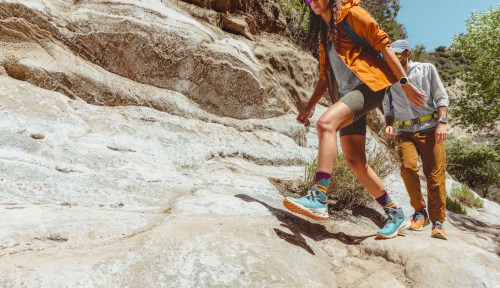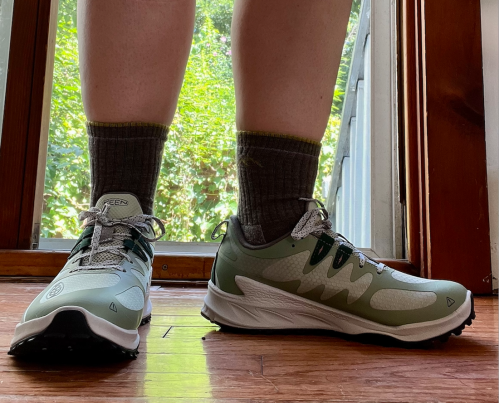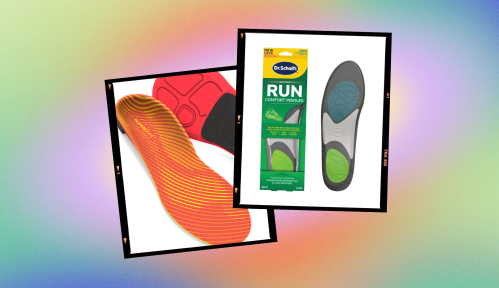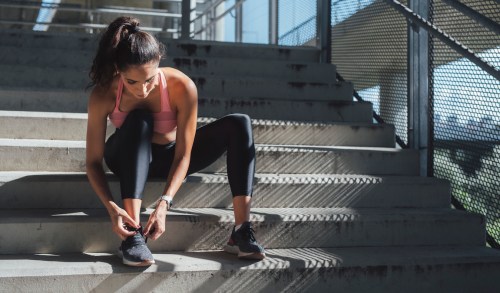Our editors independently select these products. Making a purchase through our links may earn Well+Good a commission
These Comfy Hiking Shoes Make Me Feel Super Stable on the Trails Without Weighing Me Down
Learn what the Keen Zionic Hiking Shoes feel like to wear on the trails, and how they compare to other trail running shoes and hiking boots.

When you’re getting ready for a hike, you’ve got a decision to make: Do you lace up a traditional hiking boot that will keep your feet and ankles safe and supported? Or, do you don something less clunky and cumbersome, even though it may not offer the same amount of protection?
Experts in This Article
podiatrist at Rocky Mountain Foot and Ankle Center in Colorado
podiatric surgeon at Sunshine Ankle and Foot Experts in Florida and a spokesperson for the American Podiatric Medical Association
Personally, I’ve always opted for the latter. As a trail runner, I much prefer feeling fast and light on my feet, and typically wear trail running shoes even when I’m going at hiking pace. I’m not the only one: Last year, Well+Good interviewed thru-hiker Zoë Rogers, who traversed the entire 2653-mile Pacific Crest Trail, and one week into her trek, decided to ditch her hiking boots for a pair of trail runners.
The iconic hiking brand Keen has also noticed that a number of the younger hikers who have taken to the trails since the pandemic often sport sneakers not designed for outdoor terrain. So the company decided to design a hiking shoe that was more athletic and agile than traditional models.
Keen, Zionic Waterproof Hiking Shoe — $160.00
Available sizes: 5-12, in half sizesWeight: 10.58 ounces (300 grams)Colors: 3
Pros:
- Light and nimble
- Plenty of cushioning and padding
- Excellent waterproofing
- Top-notch traction
- Firm support to keep your ankle stable
Cons:
- Don’t have much bounce if you’re looking to speed up to a running pace
I was intrigued. Since I’m carting my one-year-old daughter around with me on the trails these days, I’ve become more cautious about what I’m wearing on my feet (I really don’t want to slip or roll an ankle while she’s on my back). The Zionic hikers seemed like they might offer the exact kind of nimble but supportive shoe I was looking for. Here’s how they held up to the test.
What the Keen Zionic Waterproof Hiking Shoes feel like to wear
The Zionic collection includes two low-profile options: the Zionic Speed Hiking Shoe ($145) for a breathable fit in dry climates and a water-resistant version, the Zionic Waterproof Hiking Shoe ($160), for those of us who hike in muddier areas. I laced up a pair of the Zionic Waterproof hikers and strapped my daughter on for a few miles through some off-leash trails with my husband and our dog. Most of the ground was packed dirt, with a few rockier areas, some wooden bridges, a bit of elevation to climb, and a pond that we spent far too long throwing sticks into for the dog to fetch.

Once on the trail, I immediately noticed that I felt much freer as I hiked in my Zionics than if I were wearing classic hiking boots. With a lightweight foam midsole plus a full-length stability plate, these sneakers are easy to walk in, with plenty of cushion and responsiveness in each step. There’s also a good deal of padding around the heel and ankle, so even though the heel counter is stiff, it doesn’t cut into my skin or blister. And weighing just over 10.5 ounces (or 300 grams), they don’t feel like I’ve got extra weights strapped to the ends of my legs, either.
The traction on the outsole provide as much grip as I could want; even when climbing downhill on some rocks, my footing felt secure. A major win for me while baby-wearing.
I also stuck my feet in some water to see how well the waterproofing held up and was impressed by the results; even with the tongue completely soaked, my feet stayed dry.

How the Keen Zionic shoes compare to trail runners
Keen markets the Zionic line as their “fastest, lightest” hikers, and pictures on the site show people running. This made me wonder: What is really the difference between this kind of lightweight hiking shoe and a trail running shoe? And what’s the benefit of grabbing a pair of Zionics rather than something meant for running?
“A trail running shoe is going to be a little bit lighter, a little bit softer in the sole. A hiking shoe is going to be a little stiffer, maybe a little heavier, a little more solid construction,” says podiatrist Brett Sachs, DPM, FACFAS, of Rocky Mountain Foot and Ankle Center in Colorado. A trail running shoe will also offer more high-impact absorption than a hiking shoe, since hiking is a more low-impact activity that doesn’t need as much of that cushion, adds podiatric surgeon Timothy Miller, DPM, FACFAS, DABPM, who practices at Sunshine Ankle and Foot Experts in Florida and is a spokesperson for the American Podiatric Medical Association.
I own a handful of trail running shoes and, when comparing them to my Zionics, can see that the sole of the Zionic is wider and firmer than any of the other models, with more curvature up around the edges of the insole for increased stability, more padding around the heel and in the tongue, and stiffer material in the heel counter for extra support. My heaviest pair of trail runners (which are, admittedly, known for being on the heavier side) weigh nearly the same as the Zionic: 297 grams to the Zionic’s 304 grams, according to my kitchen scale.
I even put the Zionic on my left foot, and my favorite trail runners—the Saucony Peregrine—on my right foot, to see how they compare to wear. Jogging and jumping around on bricks, stone, and dirt in my yard, the two shoes seemed to have similar amounts of cushion, though the Zionics were stiffer, had less bounce to them, and offered more motion control. While I could easily swivel my ankle back and forth in the Peregrines, the Zionics really kept my ankle in place, even without a high top.
What about the Zionic hiking boot?
If that high top is what you’re after, the Keen Zionic collection also offers the Zionic Mid Waterproof Hiking Boot ($170), in which the laces come up over your ankle for more support.
Not sure whether to go with a traditional boot or a low-top sneaker? “If you’re going to be hiking in an area where you know the terrain is not very rocky and you’re not going to be stepping on a lot of uneven ground, then absolutely, you can wear low hiking shoes,” says Dr. Miller. “It’s when that instability occurs, with rocks or logs or branches on the ground, when a lot of ankle sprains and tendon injuries can occur. The higher top [hiking boots] will support the ankle to help reduce the chances of those injuries happening.”
Hiking boots can also decrease your risk of chronic injuries, too. Dr. Miller explains if the heel sways side to side too much when you’re hiking, the subtalar joint that connects to the ankle will get overly stressed, “and that stress will actually trickle down through the arch to the toes, so it can cause overuse injuries.”
But just like the thru-hiker Zoë Rogers, not all of us enjoy a boot, even on challenging terrain. “What I suggest to my patients is, just because it’s stiffer and more supportive doesn’t necessarily make it the right shoe for you,” says Dr. Sachs. His advice? Try out multiple styles and see what your feet like best. “Because there’s nothing worse than an ill-fitting hiking shoe; that would just make your day pretty unhappy.”
Sign up for the Well+Good SHOP Newsletter
Get exclusive deals on wellness, beauty, fitness, and food products that have been hand-picked by our editors.
Got it, you've been added to our email list.








